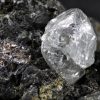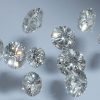It’s quick to locate a diamond this day and age: go shopping, visit the shop – and in some instances, find diamonds in the supermarket where you purchase your groceries! Yet we can pause in this era of immediate gratification to wonder, “Exactly how did those diamonds end up before me? “The short response is, time and energy build them – And if diamonds are produced naturally- they’re mined. Diamond mining is a mix of art, science, engineering, and much hard work.
The three main types of diamond mining are
-
PIPE MINING
Diamond pipe extraction is used for identifying the primary sources of materials for pipes. Once the pipes and presence of diamonds are discovered, shanks at ore-bearing pipes are inserted into the Earth, and a large amount of soil is extracted.
-
ALLUVIAL MINING
The Kimberlite pipe, which reaches the Earth’s surface, is eroded after thousands of years of wind and rain. Rough Kimberlite diamonds are carried in rivers and streams downstream. These diamonds are often found in other materials such as mud, clay, and underwater plant life in the gravel layer. The Industrial Alluvial mining process involves the construction of a large wall for collecting water in a particular area where the gravel is collected and then brought to the surface and prepared for processing.
-
MARINE MINING
Marine mining requires diamond production from the seabed, well under the shore. Using a powerful crawler that pulls gravel on the seabed by versatile hoses or tubing, ships with advanced equipment are used to search for diamonds deep at sea. A swimmer would collect diamond-bearing gravel from the shallow seabed during the early days of underwater mining.
STAGES OF RECOVERY OF DIAMONDS FROM ORE
Diamonds are extracted from the ore through the process that consists of the following five stages:
-
CRUSHING
Diamond-bearing rock and gravel are gathered and transported to the primary crusher, which is responsible for minimizing the more significant pieces of material into smaller parts that are not wider than 150 mm and can be handled even easier. Sometimes a secondary crusher (also called a roll-crusher) is used to break down the ore into even smaller parts.
-
SCRUBBING
In this stage, the ore pieces are scrubbed to remove any loose excess material that is attached to them and then screened. Fragments of rock smaller than 1.5 mm are rejected since the mining of diamonds from these little pieces is too tricky.
-
CYCLONIC SEPARATION
A ferrosilicon powder and water solution are blended at a particular consistency and combined with the diamond-bearing material. Once mixed, the solution is poured into a cyclone, where it is tumbled and forced to separate in this process. The elements with the highest density sink to the bottom of the cyclone, resulting in a layer rich in diamond concentration.
-
RECOVERY
The diamond-rich extract goes through different processes, including magnetic resistance, the luminescence of x-rays, and fluorescence of crystallographic light. These processes are determined based on the diamonds’ unique properties. Such methods distinguish the rough diamonds from the other high-density products obtained in the separation plant for cyclones
-
CLEANED, PACKED AND WEIGHED
The diamonds stored in the storage box are polished, weighed, and packed for shipment in an acid solution. Make sure to invest your money in purchasing the best diamonds and various types of synthetic diamond RVD from the best diamond suppliers.


